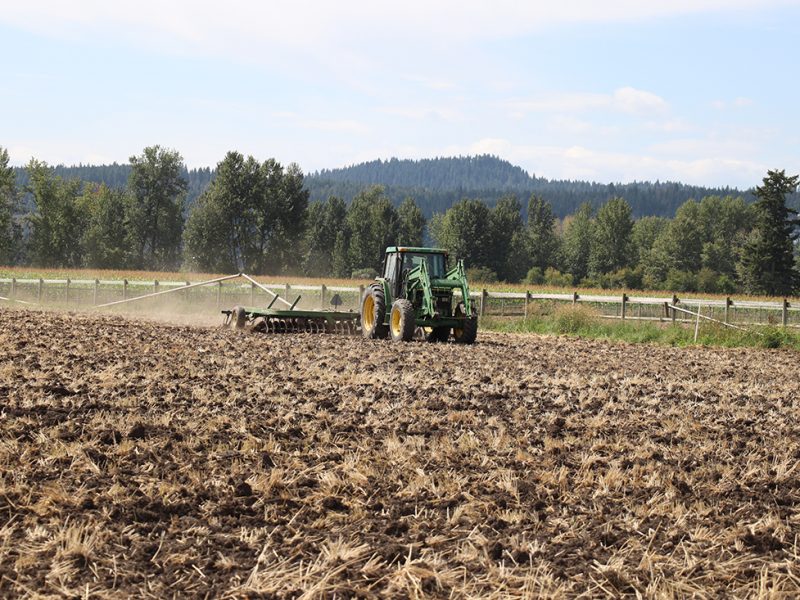ARMSTRONG—Rules replacing the Agricultural Waste Control Regulation kick in October 1, but producers should take steps now to ensure they’re in compliance.
The province unveiled the Agricultural Environmental Management Code of Practice (AEMCoP) in February. Come October 1, producers need a risk assessment if they plan to apply manure or other nutrients to land located in a high-precipitation area during the shoulder season of February, March or October.
A risk assessment uses factors such as forecasted precipitation, soil type and slope to evaluate the risk of nutrient loss. The assessment will help farmers reduce the risk of contaminated runoff entering surface water.
Agricultural operations with five hectares (12 acres) or more also face deadlines for vulnerable aquifer recharge areas and phosphorus-affected areas coming into effect for different geographical regions. The deadlines trigger a need for some producers to complete a nutrient management plan (NMP) for the next growing season.
NMPs are required if the site has tested high for soil nitrate and phosphorus levels. Fourteen dairy operations in the Hullcar area, north of Armstrong, for example, are required to have NMPs this year.
According to the code, the areas of Cobble Hill, Langley, Abbotsford, Osoyoos, Grand Forks and Spallumcheen must complete an NMP as of July 15, 2020. (Complete details regarding affected regions and deadlines are available at [www.gov.bc.ca/Agricultural-Environmental-Management].
The code also has a list of requirements all producers must follow for treatment of wastewater, setbacks and soil testing for nitrogen and phosphorus.
“I strongly recommend that everybody start doing sampling and see where their results are coming back, and then they’ll know what they have to do down the road when they start having to decide whether they need to do a full nutrient plan themselves or have to bring a QP [qualified professional] in,” certified crop advisor Doug Macfarlane told a group of dairy farmers during a recent farm tour in the North Okanagan. “The sooner everybody sort of gets on and finds out where their fields are, the sooner they can get compliant with everything.”
Macfarlane says getting soil samples prior to October 15 is preferable because before that date the samples only need to be 12 inches whereas the depth goes to 24 inches afterwards because of the risk that fall precipitation may have pushed nutrients deeper.
BC Agriculture Council executive director Reg Ens said implementation of the AEMCoP is going as well as can be expected.
“Given that there’s a long implementation phase, which is what we worked for because we knew it was going to be a lot of change, it’s going pretty good,” he says.
BCAC is working with the province’s agriculture and environment ministries to relay appropriate information to member organizations and commodity groups.
“Agriculture has been tremendous in this process. I really want to give a shout-out to the Ministry of Agriculture,” he notes. “They’ve been working hard to help interpret and implement and put tools in place.”
BCAC’s multifaceted role in the code’s implementation is focused on getting practical information to producers and working with government ministries to ensure nothing is missed.
“There’s little pieces that come out as we dig into the details that people hadn’t thought of or got missed when the regulation was being developed,” says Ens. “We’re making sure those things get tracked and – we don’t decide those things – but making sure the correct people are working on it and getting those questions answered as quickly as possible.”
Macfarlane said having accurate records of farm practices will be key when a problem arises associated with contaminated runoff, even if a producer is not in a high-risk area.
“The Ministry of Environment started saying at the first meetings – and they’re really sticking to it – if something happens somewhere, they’re going to go out and get everybody’s nutrient management plans and find out who’s at fault,” he warns.
Macfarlane does not expect code implementation to be onerous or negatively affect yields.
“There’s been a number of people in the [North Okanagan] area growing crops the last three and four years, and some of them quite a few years longer, that are basically under the same regulations that are coming through now and their crops are really working very nicely,” he says.
Ens says farmers are overwhelmed by regulations but this is one that will benefit the industry.
“Having good environmental regulations is, I think, key for us as an industry,” he says. “We are an industry that relies on clean water, clean air and a healthy environment. That’s what we all want. So having good regulation is critical for us.”


 Province extends deadline for meat consultation
Province extends deadline for meat consultation